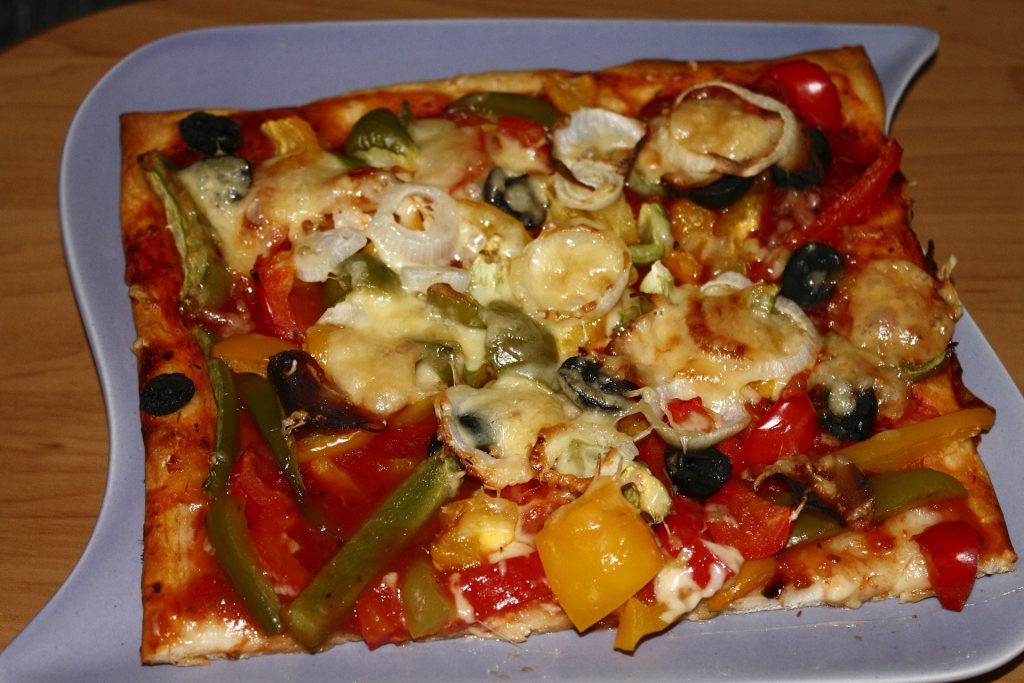
As a parent, I am always looking for new and efficient ways make my kids eat more veggies because eating greens has many health benefits. Vegetables are the powerhouse of vitamins, minerals, and other healthy compounds which boost their immune system and help them to fight off the cold, flu, and other infections. Most vegetables are low in calories and fat but high in dietary fiber. The high fiber helps children stay full longer and be able to concentrate more in the school. It also aids in having a healthy digestive system.
So how much of veggies your child should be eating? Go with More Matters! Eating fruits and vegetables in a rainbow of colors will provide a broad range of nutrients that they need. You also go with the MyPlate icon from the USDA recommendation to fill HALF your plate with colorful fruits and vegetables at every meal!
Getting kids to eat more veggies doesn’t have to be a fight. Here are some creative ways to introduce and serve them.
Get them involved – Children are more invested in a meal if they help with its preparation. Take your kids with you for grocery shopping and allow them to pick a new vegetable to try. At home, involve them in the meal preparation. Letting them clean carrots, snap beans, mix the dressing and set the table gives them a sense of pride and makes them more enthusiastic and cooperative at meal time.
Make Vegetable look attractive- Children often prefer foods served separately. So, rather than mixed vegetables try serving two vegetables separately. You can add color to salads by adding baby carrots, shredded red cabbage, or spinach leaves. Try decorating the plates or serving dishes with vegetable slice
Dip it– If your kids don’t eat vegetables, experiment with dips. Many vegetables taste great with a dip or dressing. Try a low-fat salad dressing with raw broccoli, red and green peppers, celery sticks or cauliflower.
Enforce the “one bite rule”- Research shows the “one bite rule” where the child has to try at least one mouthful of a disliked food when it is served work wonders with picky eaters. You have to make sure to expose a different kind of vegetables for at least 8-10 times before they begin to rate it more favorably.
Don’t force them to finish- Never fight and punish your child for not eating her veggies as this will create a negative meal experience and the child will learn to associate food with the bad feeling. You don’t have to be a short-order cook but try not to start a fight.
Be a good role model- Children have a natural tendency to imitate, so be a good example of healthy eating! Eating with them as a family, and if you are eating a vegetable at dinner, your child is likely to take notice and do the same, well maybe not immediately!
Here is recipe for you to try with your kids:
Technicolor Vegetable Pizzas
Preparation time: 20 minutes
Rose colored glasses won’t be needed to appreciate the variety of colors and blend of tastes offered by these easy to make individual pizzas.
- 3 cups frozen mixed vegetables with mushrooms
- 5 slices Italian bread (1 oz. slices; each ~ 1” thick and 5” long)
- 1 tablespoon olive oil
- ½ cup prepared pizza sauce
- 1 cup finely chopped tomato
- ½ cup very finely diced onion
- 1 tablespoon dried oregano leaves
- 1 teaspoon garlic powder
- 2 ½ tablespoons grated Parmesan cheese
Instructions:
Pre-heat oven to 350º F and place oven rack in middle-high position. Microwave frozen vegetables, then pat dry. Brush all bread slices lightly with oil and spread each with ~ 1½ tablespoons sauce. Combine all vegetables in a medium-sized bowl. Carefully spoon vegetable mixture equally onto bread slices. Sprinkle with oregano and garlic powder and then with cheese. Bake about 5-7 minutes, until bread is brown on the edges and all vegetables are piping hot. Serve immediately.
Serves: 5
1 Cup of Vegetables per Serving
Fruit and/or Veggie Colors: Green, White, Yellow, Orange, Red [What’s This?]
Nutrition Information per Serving: calories: 182, total fat: 5.0g, saturated fat: 1.1g, % calories from fat: 24%, % calories from saturated fat: 5%, protein: 6g, carbohydrates: 29g, cholesterol: 2mg, dietary fiber: 5g, sodium: 339 mg
Each serving provides: An excellent source of vitamin A and a good source of vitamin C, folate and fiber.
Source: http://www.fruitsandveggiesmorematters.org/dipping-vegetable-increases-vegetable-intake-in-children
Enjoy!
Neha